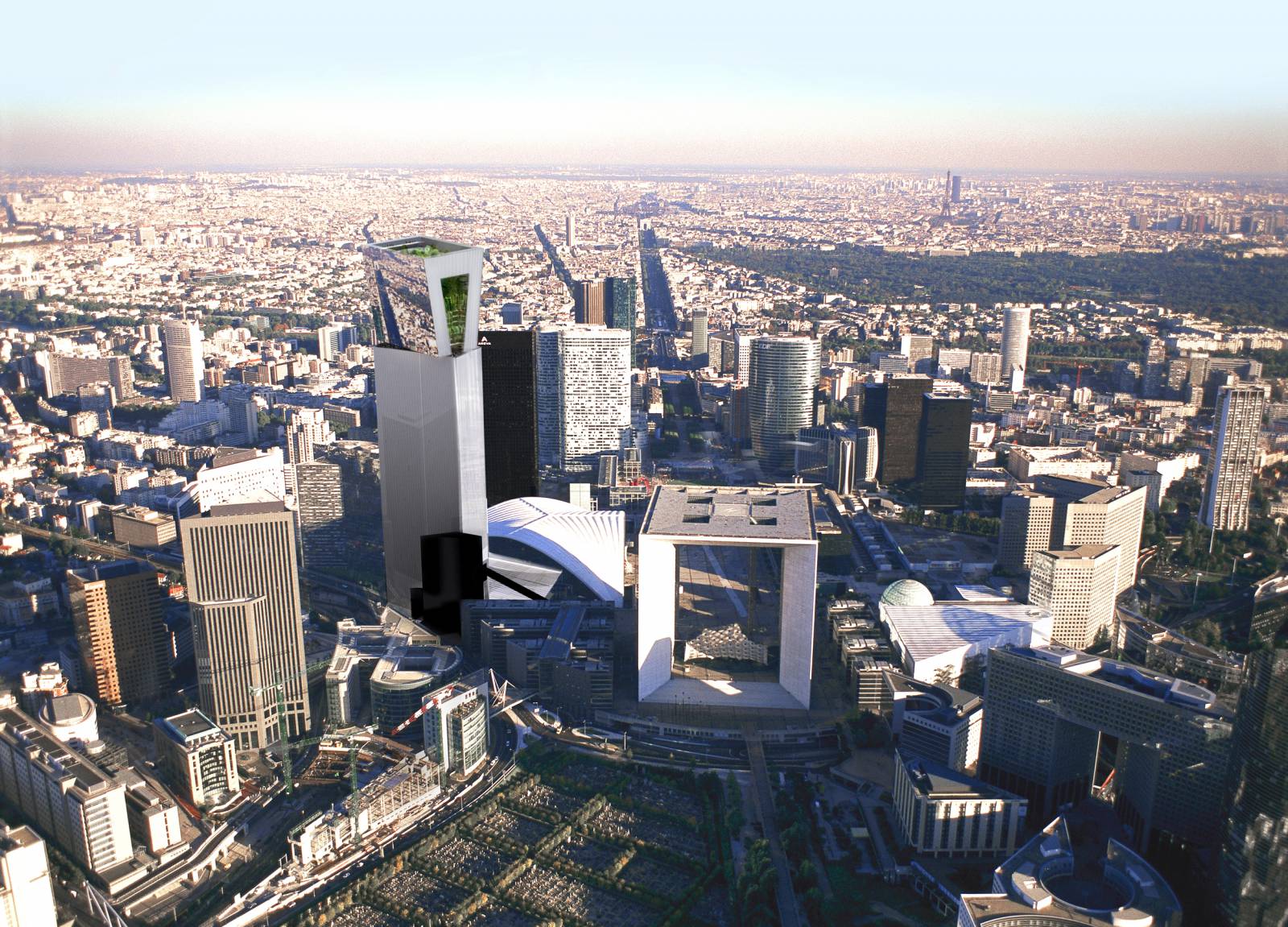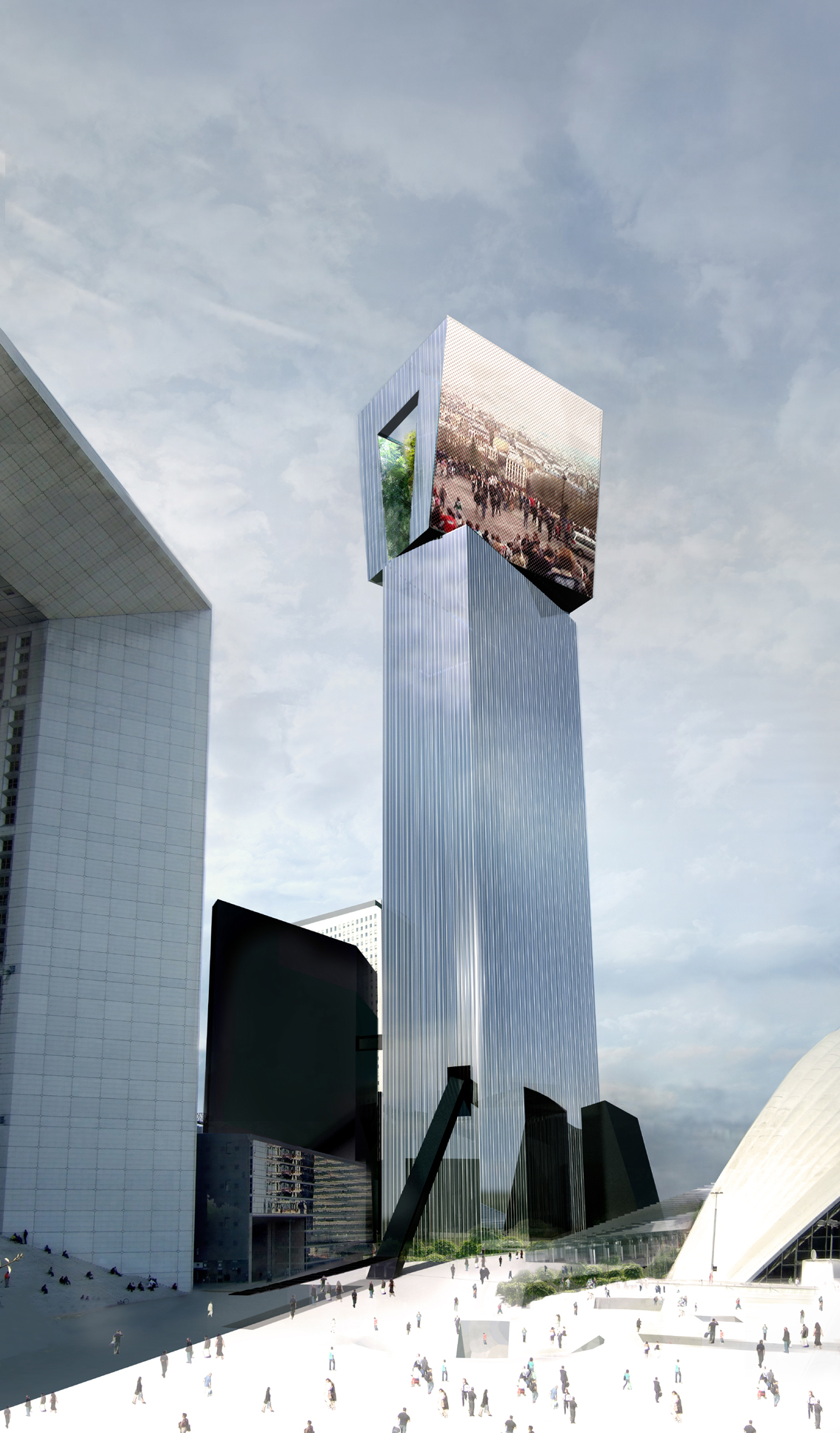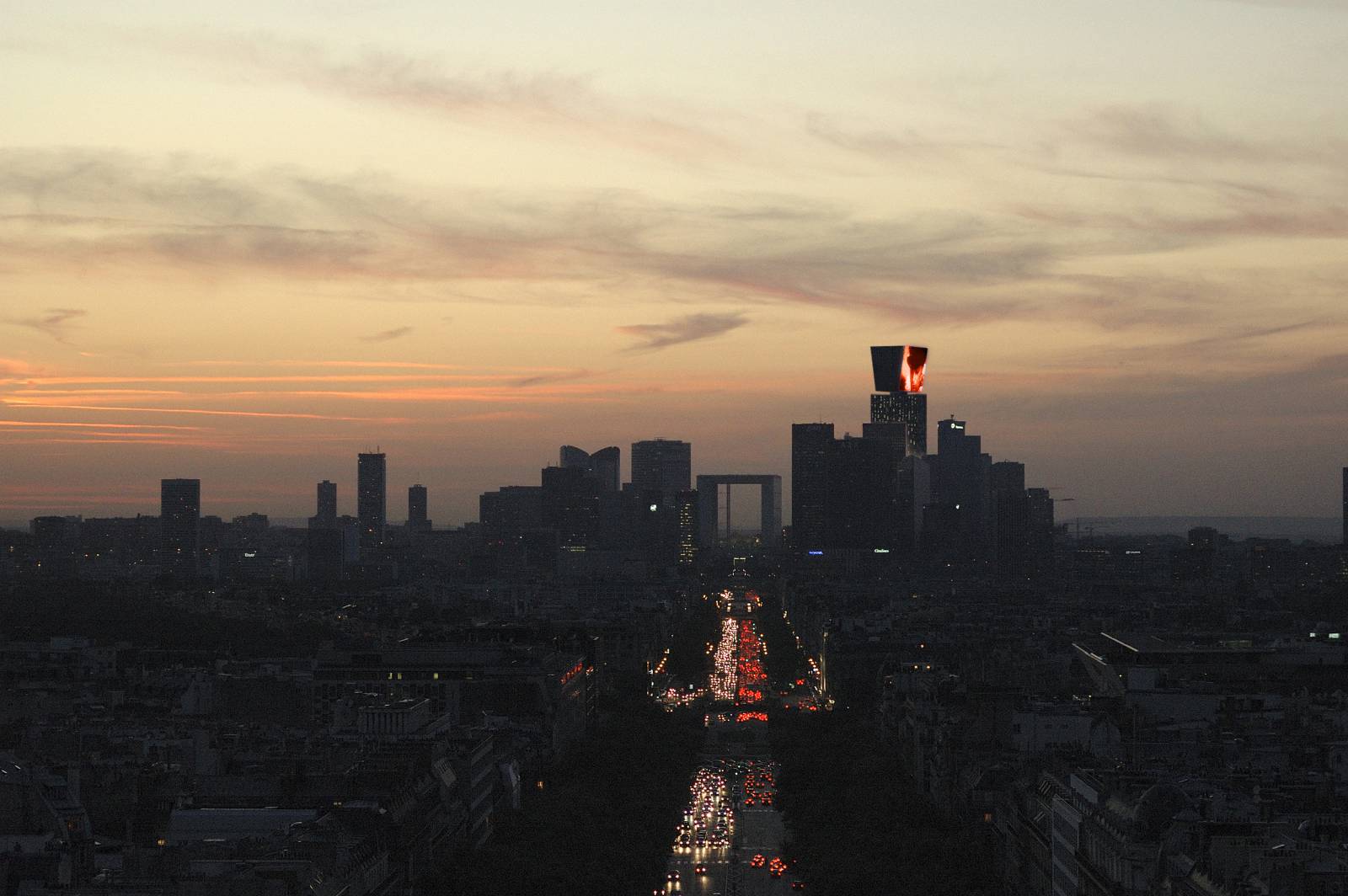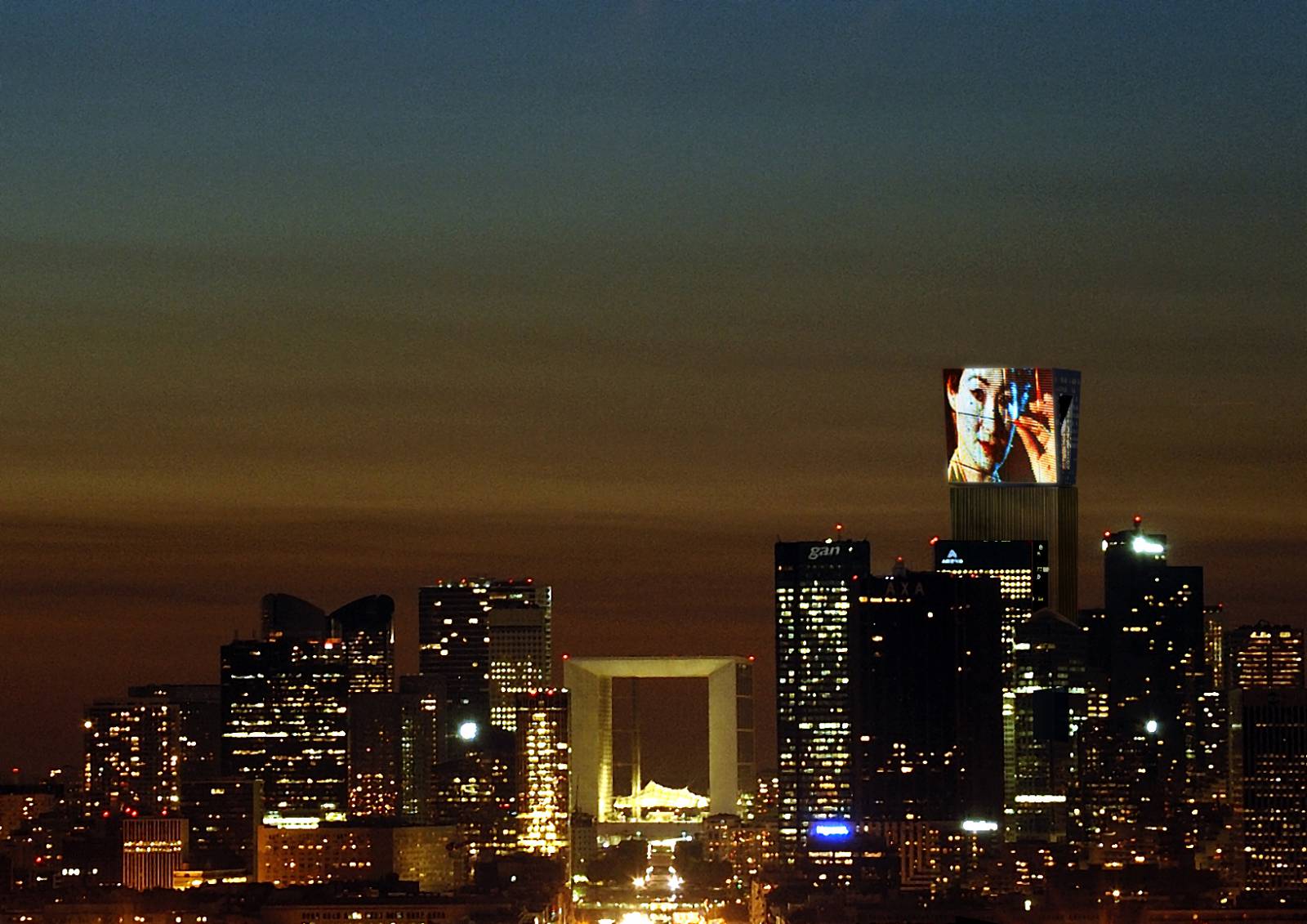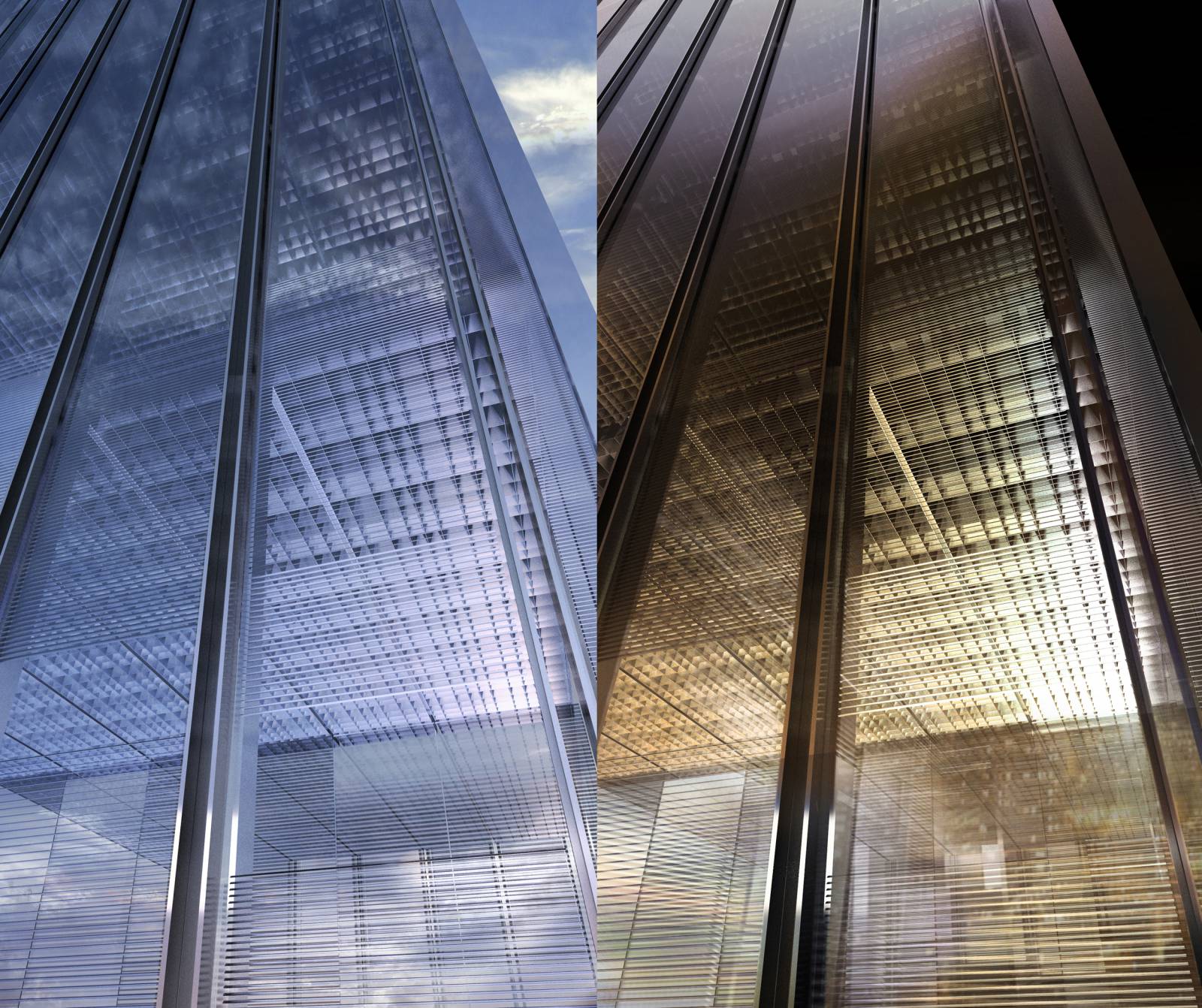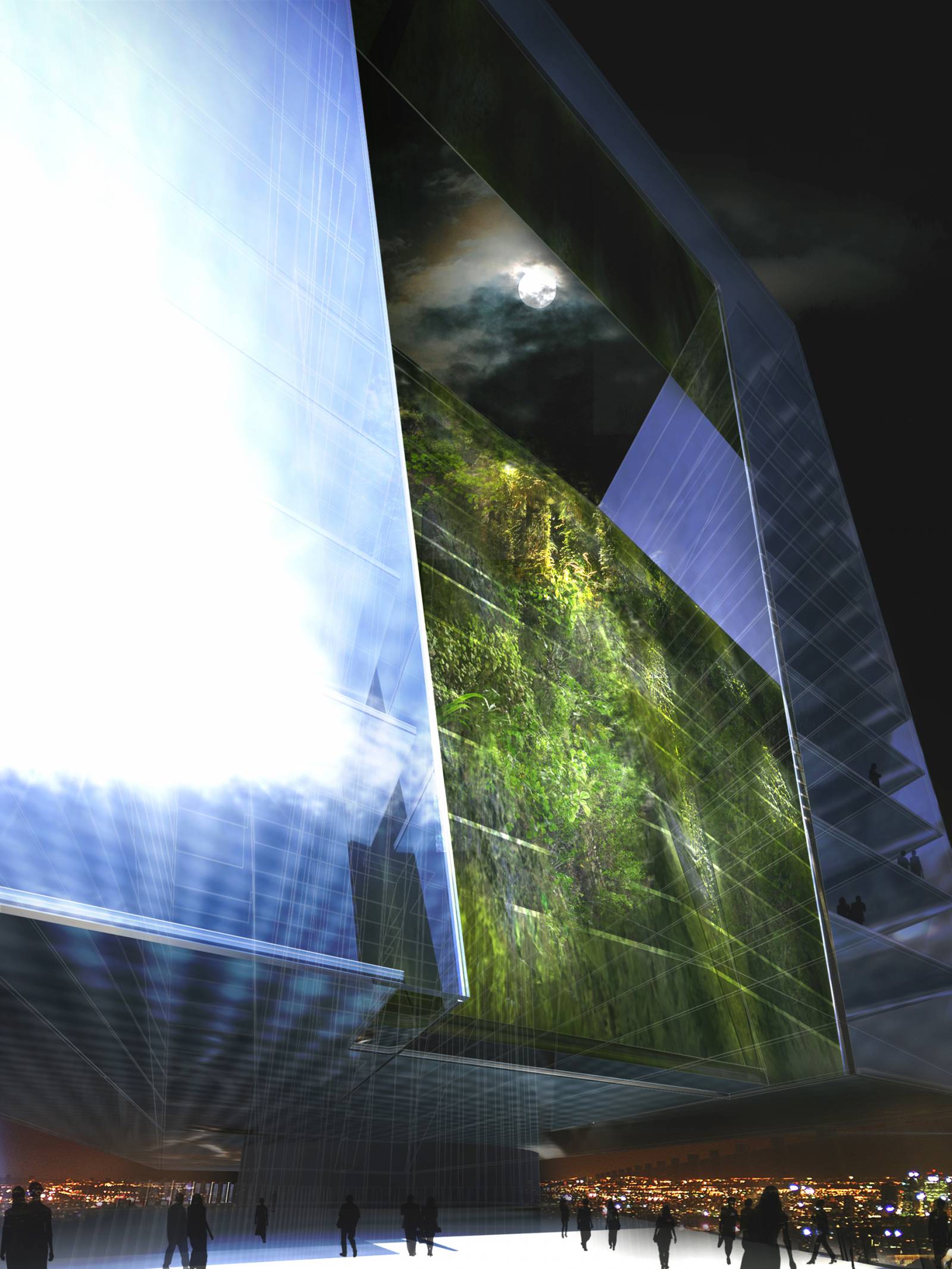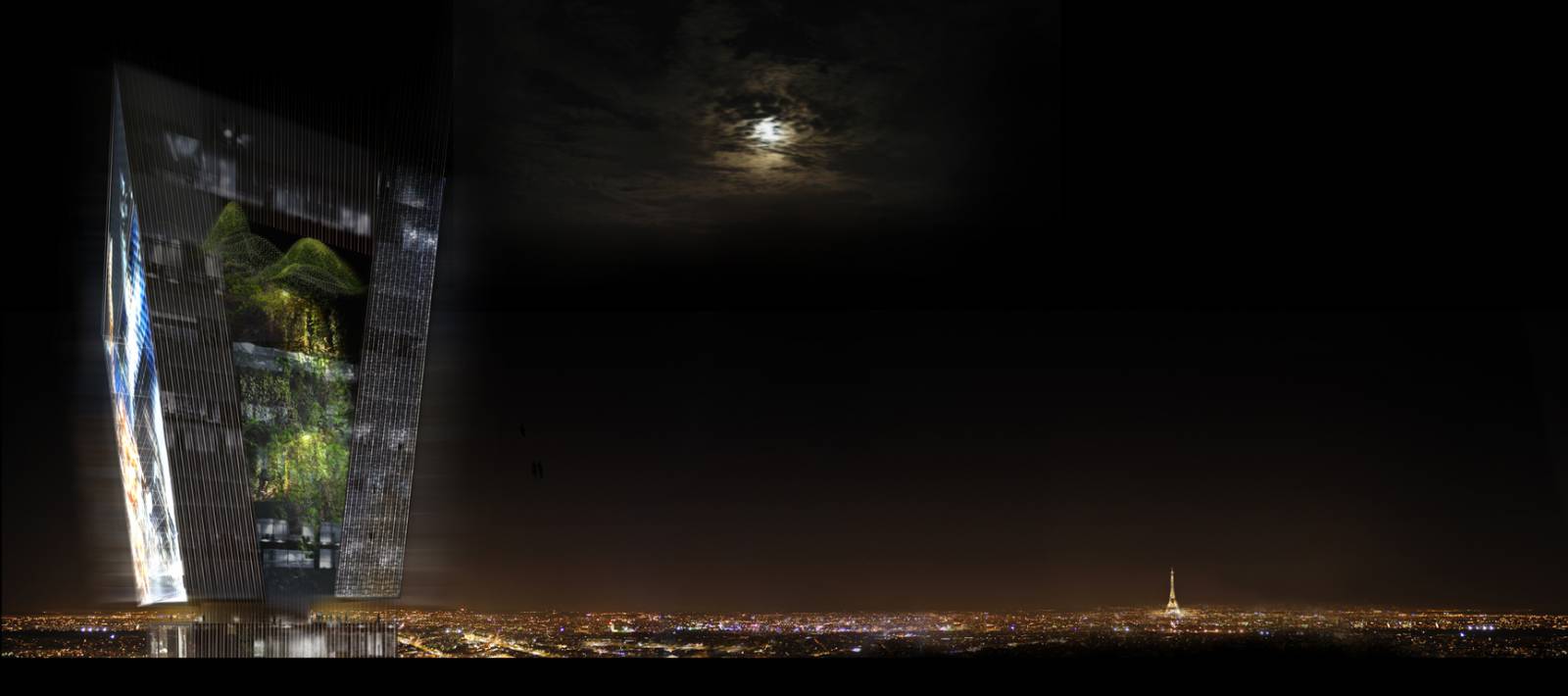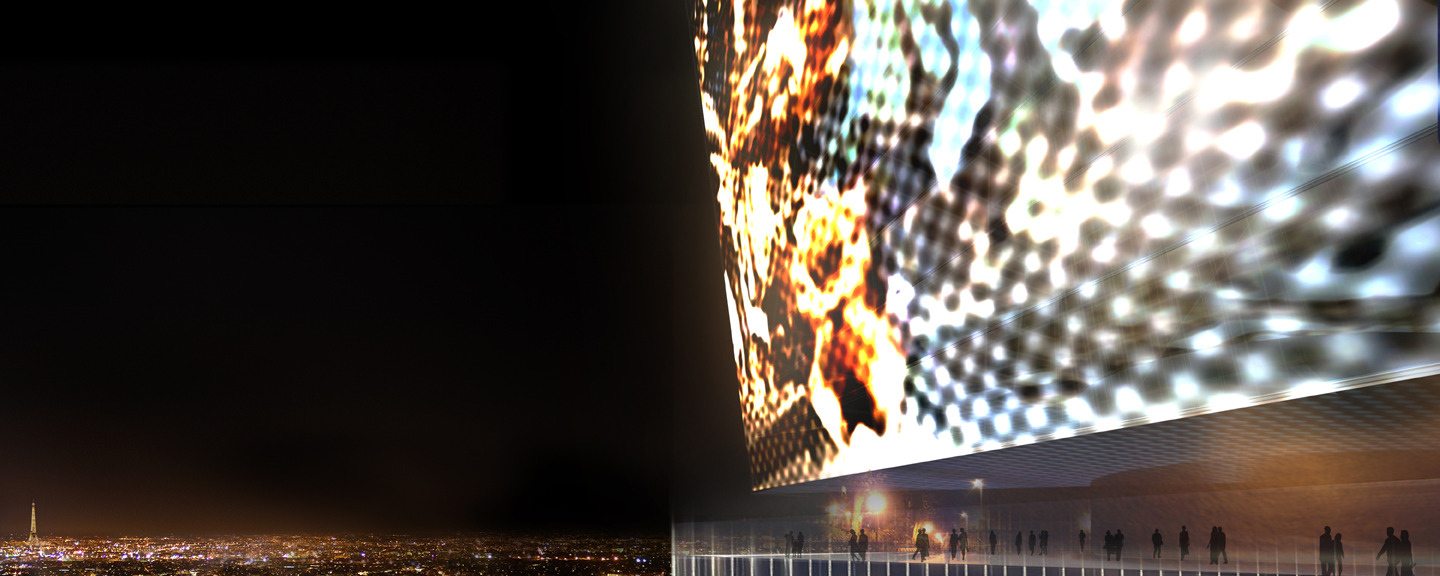Phare Tower
- Puteaux, France
“In today’s Paris skyline, there is only a single icon that stands at the 300-metre limit: Madame Eiffel.
Creating a second one is daunting… But it’s too good an opportunity to put Paris and its region back on the map of inventiveness in the urban world. It’s a matter of national salvation.
To do this, obviously, the new icon must aim to be as famous as its companion… a tall order!
No weak-kneed architect need apply! This is not the time to turn your brain off and come up with the umpteenth office tower…!
Eiffel spoke of the industrial revolution of the 19th century, of the myth of steel, of the conquest of the sky through structures that are like cobwebs.
So, let us speak of the visual revolution of the 21st century, of the myth of the alluring image, of the instantaneous digital image that informs us and fascinates us.
The Eiffel Tower has a small firmly planted head; the lighthouse tower will have a big head that turns.
It isn’t exactly clear what Madame Eiffel’s little dark head really is; it will be clear that the big head of the lighthouse tower turns the better to look at us but also the better to be seen.
Voyeur! Exhibitionist!
It’s a well-known conceptual game: ‘I can see you’ – ‘you can see me’.”
Jean Nouvel
